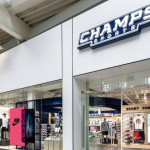adidas Group reported solid results for the third quarter, reflecting the addition of the Reebok business acquired earlier in the year, but the addition of the RBK business has also trailed the rest of the business under the Group umbrella. Company CEO Herbert Hainer freely admits that there is still much work to be done to turn the Reebok brand around, but also hinted that much of the hard work of clearing out lower-end product from retail and working through distribution issues have mostly been accomplished this year. The Reebok fill-in business was up as a percent of sales and quarter sales again outpaced the backlog decline at the end of the prior quarter. The result is a look-ahead that sees Reebok turning the corner in the back half of 2007 as the company starts to deliver on new product initiatives that are designed to build the brands performance portfolio.
adidas Group revenues, including the Reebok business acquired in January of this year, increased 53.3% to 2.95 billion ($3.76 bn) from 1.92 billion ($2.35 bn) in the year-ago period. Currency-neutral sales grew 56% for the period, just a bit shy of the 59% increase posted in the second quarter. Excluding the Reebok business, net revenues grew 12.0% for the third quarter to 2.15 billion ($2.75 bn), with double-digit sales increases coming from all regions except North America and better-than-expected results coming out of brand adidas. Sales for the adidas Group excluding Reebok increased 14% on a currency-neutral basis. Including the Reebok and Greg Norman Collection business for Q3 for both years, Sports Executive Weekly calculates the total Group saw sales increase roughly 6.4% for the period.
Net income from continuing operations, which excludes the positive impact of the divested Salomon business in Q3 last year, was up 20.3% from 207.0 million ($253 mm), or 1.03 ($1.26 cents) per diluted share, in the year-ago period.
From a regional standpoint in Q3, total Group sales in Europe accelerated from the strong performance in Q2, increasing 37.9% to 1.34 billion from 968 million in the year-ago period. The improvement reflected the addition of Reebok as well as gains in the brand adidas business that saw continued upside from the FIFA World Cup.
North America sales jumped 102% to 900 million in the third quarter from 446 million in Q3 last year, and were up 111% to $1.15 billion when measured in U.S. Dollars, reflecting the addition of Reebok and a solid Q3 performance at TM-aG. Brand adidas sales were up only slightly for the period.
Asia/Pacific saw sales jump 31.8% in euro terms to 530 million from 402 million in Q3 last year. Latin America sales increased 40.0% to 133 million in Q3 versus 95 million in the year-ago period.
For the third quarter, brand adidas saw most of its momentum coming from outside North America as total brand sales increased 12.0% to 1.93 billion from 1.72 billion in Q3 last year. Brand adidas sales in Europe broke the billion Euro mark, increasing 14.4% to 1.07 billion ($1.36 bn) from 932 million ($1.14 bn) in the year-ago period, reflecting a 15% currency-neutral improvement. Management said the biggest lift came from the Chelsea and Liverpool apparel ranges. Hainer said the brand saw strong double-digit sales growth in the emerging markets, particularly in Russia, and also saw the continued expansion of the owned-retail business push revenues higher. At the end of October, adidas opened its largest Sport Performance store to-date, which is located in Paris. They have plans to open ten more stores of this format over the next three years. A new partnership with JJB Sports in the U.K. is expected to yield 300 adidas shop-in-shops over the next two years.
Brand adidas sales in North America were up just 0.6% in Euro terms to 349 million ($445 mm) from 347 million ($424 mm) in Q3 2005, and increased approximately 5.1% when measured in U.S. dollars. Asia/Pacific sales expanded 15.3% to 400 million ($510 mm) from 347 million ($424 mm) in Q3 last year. Latin America sales were up 18.3% for the quarter to 110 million ($140 mm) from 93 million ($114 mm) in the year-ago period.
Owned-Retail sales for brand adidas were up 31.9% in Euro terms to 285 million ($363 mm) from 216 million ($264 mm) in Q3 2005. Excluding Owned-Retail, brand adidas sales increased 9.1% to 1.64 billion ($2.09 bn).
Sport Performance division third quarter sales grew 14.2% to 1.52 billion ($1.94 bn) from 1.04 billion ($1.62 bn) in Q3 last year, delivering most of the brand adidas Euro gain for the period.
Sport Heritage sales grew just 1.3% to 396 million ($505 mm) in Q3 from 391 million ($477mm) in the year-ago period, a sharp fall-off in the growth trend from H1.
Sport Style sales increased the most off of a lower base, growing by a third to 12 million ($15 mm) from 9.0 million ($11 mm) in Q3 last year.
Brand adidas operating profit improved 12.7% for the third quarter to 365 million ($465 mm), compared to 324 million ($395 mm) in the year-ago period. Gross margin improved 160 basis points to 47.7% of sales in Q3 from 45.1% of sales in the year-ago period. Operating margins were up about 10 basis points to 18.8% of sales.
Brand adidas backlog at quarter-end was flat despite declines in the European footwear and apparel business. Most of the decline was attributed to the large increase seen last year in the lead up to the World Cup. Hainer said he expects the impact to be felt for the next two quarters as well. He also said part of the decline comes from internal efforts to improve the quality of the brand presence at retail in the U.K. by tightening distribution of key products in the market. Footwear backlogs were helped by the training and tennis categories in Sport Performance, as well as gains in Sport Heritage. Apparel backlogs also improved in training and tennis, but also got a one point boost from the transfer of the NBA and Liverpool licenses form Reebok to brand adidas. North America got a three point benefit from the NBA switch.
Reebok was still the focus of most analyst calls during the quarterly conference call last week.
Reebok division revenue, which excludes the Greg Norman and Polo Ralph Lauren businesses from last year, but includes the NBA business from the same period, was down 6.5% in the third quarter based on the current adidas Group report compared to the 2005 third quarter report issued by Reebok. Sales were pegged at about 778 million ($992 mm) in Q3 this year, compared to 832 million ($1.02 bn) in Q3 last year.
For the eight-month YTD period, which excludes the month of January due to the timing of the acquisition, sales for the Reebok business decreased about 9% on a currency-neutral basis, due primarily to continued weakness in North America and Europe, which more than offset strong increases in Asia and Latin America. Hainer said the results offer a look at an improving business at Reebok, since third quarter currency-neutral sales were only down 4%.
He pointed to a “sequential improvement” that includes “solid growth” at Rockport and The Hockey Company and reflects a 7% decline at Reebok. The business had been down in the mid-teens to 20% over the last two previous quarters. Hainer said the decline is now coming primarily from the family footwear channel in the U.S. and key accounts in the U.K., which more than offset double-digit gains in Asia. Still, Hainer admits that brand re-positioning efforts in the U.S. and U.K. are “taking longer to gain traction” than originally anticipated.
Reebok brand backlogs were down 14% in currency-neutral terms at the end of the quarter and were down 16% when measured in Euros. About three points of the decline came from the shift in the NBA and Liverpool licenses to brand adidas. Hainer remained positive despite the sharp declines in the order book, pointing to improving fill-in order business and cancellation and returns rates that are at their lowest level in three years. The at-once business is up more than 17% as a percentage of sales so far this year. Hainer also pointed to the running business at Reebok which saw Q1 advance orders improve 20% to the highest level since 2004. Still, Hainer tempered the message a bit, indicating that the brand wont see positive order growth until the second half of next year. He still anticipates moderate growth for the brand next year.
“Our plan for Reebok is based on stabilizing the brand in 2007, building a foundation in 2007, and delivering over-proportionate growth in 2008 and beyond,” said Hainer.
Reebok brand sales were down 12% for the eight-month YTD period on a currency-neutral basis, due primarily to the decrease in sales of “lifestyle product.” Rockport brand revenues were up 6% in currency-neutral terms and The Hockey Company, which includes the CCM, JOFA, and KOHO brands, saw sales increase 16% on a currency-neutral basis, thanks to benefits derived from the NHL being back in business this past year.
The company still expects Reebok brand sales to decline in mid-single-digits for the year.
>>> Now, will U.S. retailers really give them a chance to re-position the Reebok brand???
| adidas Group | ||||||
| Third Quarter Results | ||||||
| (in $ millions) | 2006 | US $** | 2005 | US $** | Chg | US $** |
| Group Sales | 2,949 | $3,760 | 1,924 | $2,348 | 53.3% | 60.1% |
| adidas | 1,941 | $2,475 | 1,729 | $2,110 | 12.3% | 17.3% |
| Reebok*** | 778 | $992 | 832 | $1,015 | -6.5% | -2.2% |
| TM-aG | 194 | $247 | 177 | $216 | 9.6% | 14.5% |
| Gross Margin | 45.0% | 48.5% | -350 bps | |||
| Net Income | 249 | $318 | 218 | $266 | +14.2% | n/a |
| Diluted EPS | 1.12 | $1.43 | 1.09 | $1.33 | +2.8% | n/a |
| * Currency-Neutral Change. | ||||||













